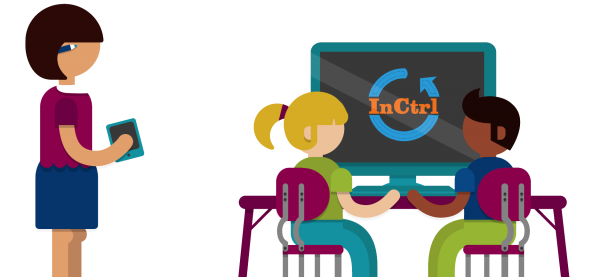There are many opportunities to connect digital citizenship topics to the subject of Social Studies. Here are additional activity ideas to help you integrate InCtrl lessons into this subject.
Use digital media and tools to promote good research habits, fact checking, citation, presentation, and communication skills.
- Have students create a presentation to demonstrate knowledge, to present a book report, or critical review.
- Think of how students can use PowerPoint, iMovie, or create a poster, PSA or podcast as a summative assessment.
-
Think of more ways that your class can use digital meeting or communication technologies such as GoToMeeting, Skype, or Google Hangouts. For example, hold cross-cultural discussions, study sessions, virtual assemblies, or class presentations with students from other schools, communities, states, or countries.
-
Have students present their knowledge, opinions, projects or debates to younger students, fellow students, adults or public officials.
-
Collaborate with teachers of other subjects to encourage students to exercise their communication and writing skills using responsible and ethical research methods and multimedia tools.
“Looking at the InCtrl lesson “Living in a Digital World” I realize that we as a school system do not ever address “Internet Etiquette.” Many teachers and parents have no idea what might be acceptable online behavior…[so] now, more than ever, I feel it is our responsibility to address it and get the message out to the community. [The InCtrl] lessons and resources provide a good starting point.”
Teacher, Pennsylvania
Lesson Idea Starters
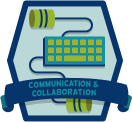
Watch the videos in this lesson to prepare for issues that may arise during digital collaboration projects and brainstorm ideas on how to work together digitally with schools in other locations.
Connect this topic with a lesson on the United Nations. Discuss how organizations such as the U.N. work together and the difficulties to collaborate with people who live in other places and may interpret the same topic differently. If your school has a Model U.N., explore how it works and how students can get involved.
- Open Street Map is a global community-built map, which maintains and contributes to mapping data such as roads, trails, railways, stations, cafes, and more around the world.
Have students collaborate with kids from other communities and states to learn about issues that can impact them. For example, environmental issues (such as fishing, mining, fracking, trash dumping, water conservation, forest fires) and share with one another what they already know from their research and local media.
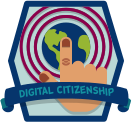
- Create a T-chart. On one side have students list what would make a good citizen in your community. On the other side, list what would make a good digital citizen. After watching the student video with the class, discuss and add to the T-chart.
- Split students into groups and have them create charts of what it means to be a good citizen within the following environments and groups:
- Family
- Neighborhood
- Classroom
- School
- Sports team
- Multiplayer online game
- Online Social network
- Compare and contrast the technological devices their families have owned over time.
- Research the different digital and technological inventions used for communications, their inventors, and how the technology has evolved over time. For instance, start with the telegram, telephone, or invention of the Internet.
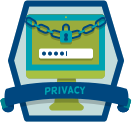
- The topic of “Big Brother”, and books such as Brave New World and 1984 that deal with the change in privacy with the evolution of technology. Ask: What is privacy? How has it changed in your lifetime? Why is it important to you? What would you think if you knew that everything you did or said was recorded? How would that change/not change your behaviors?
- Reality TV shows, such as “Big Brother” or “Real World” for example, as well as other types (such as competitions, hidden cameras, a “day in the life”, etc.). Discuss shows students have heard of or watched, and ask: How much of your life would you want on TV? In what scenarios, if any, would you be open to having your life televised? How much of reality TV is real? How much of it isn’t real?
- Privacy as a fundamental human right in the United Nations Universal Declaration of Human Rights and International Covenant on Civil and Political Rights
- The 2013 National Security Administration leaks
- Government security, administrations, goals, CIA
- Spying and surveillance
- Historical examples
- Ethical implications
- Personal surveillance (at home, school or work)
- The concept of “Big Brother”
- The Patriot Act
- Freedom of Information Act
- The Privacy Act of 1974
- Privacy and the Constitution
- Children’s Online Privacy Protection Rule (COPPA)
- The European Union Telecommunications and Data Protection Directives
- United Nations General Assembly resolution to recognize “right to privacy in the digital age”
- The use of personal ID cards around the world
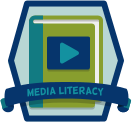
- Discuss the intentions of the chart, map, illustration, or photo. Ask: What information is published, and what is left unpublished? Who makes this decision? Who created it? How do we know the representation of information is accurate? Was it edited? What are they really trying to say?
- If studying the weather, for instance, discuss how the role of media in informing the public about expectations. Take a look at weather-related photos that made it into the news or online, like those published after Hurricane Katrina, earthquake in Haiti, the tsunami in Japan, and Hurricane Sandy. Ask if students think they are real photos and faux-tos (fake photos). Ask: What story do they tell? What impact does this image have? How do you evaluate the truth? (Visit Snopes for specific and documented examples with sources debunking or validating media images or stories.)
- Ask: What is the story behind this photo? What makes it powerful? What would it be like to be in this photo? How can an image make an impact? Can an image change history or beliefs?
- Ask: Is this image real? How do you know? Many photos throughout history were altered to present certain ideas or eliminate other ideas or people. See examples here and here.
- Discuss symbols such as flags or the peace sign and the power they can have. Analyze how they are used (for example: politicians frequently stand in front of flags.)
- Ask: How is history written and passed on? How do we know what is true? How are beliefs created?
- Talk about propaganda and how it was used to influence and distort people’s perceptions and ideas. Study events that were presented in a way that were “not what they seemed”. For example:
- Orson Welles War of the World radio drama from the 1930’s (which simulated news bulletins of alien attacks in the U.S., which many people thought were real and created widespread panic)
- Nazi propaganda during World War II
- The Kennedy – Nixon presidential debate of 1960.
- Ask: What makes a person famous? Where did you get information on this person? Are they famous for good or bad reasons? How does this connect to having a positive/negative reputation (or historical/digital footprint)? For example, how is Christopher Columbus portrayed in the media and what is actually known about him?
- Talk about how stories can change as more information becomes available and how initial “news” may not be complete or accurate.
- This topic can lead into an exploration into the justice system, and why there are processes and procedures in place to protect individuals to ensure that all facts are evaluated before conclusions are drawn, rather than being based on media reports.
- Have students choose a historical event, and using multimedia tools and media construction techniques, they will create a “report” on the event to the public.
- Explore the psychology of fonts here and here.
- How brands use color in their logos: http://thelogocompany.net/blog/infographics/psychology-color-logo-design
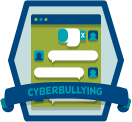
Connect this topic to the study of any historical war or highly debated issue. For example: Civil War, slavery, civil rights movements, 1960’s anti-war movement, etc. Have students imagine that they are living in a period of history during this time, and observing a war or conflict.
Ask: What are some things different sides of the conflict/war may say to one another? How could this have led to more or less problems if they had social media? Would you be an upstander or bystander? How does this issue relate to something you have experienced in your life?
- Research what bullying laws are in place (if any) in your state, and compare to other states.
- Collect recommendations from suicide prevention specialists or hotlines on how press should cover bullying/suicide situations.
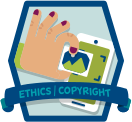
Have students think about how citations can benefit them. For example, citations can establish credibility and authority.
Do a lesson on how take good notes, cite resources and creators of images and research properly, and how to complete a bibliography.
- Discuss when borrowing ideas from others isn’t wrong, when it is acceptable, and when it’s important to give credit, where credit is due.
- Have students write their own constitution. Ask: What sources would you use? What references? How have society’s norms changed? What parts are outdated from other constitutions? What would you add?
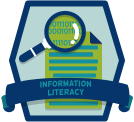
Use this lesson at the beginning of the school year or before the first research project. Help students find and analyze different reference materials and evaluate the reliability of information.
- Variations and the evolution of measurement scales, systems, and accuracies.
- The evolution of understanding in astronomy and the solar system, from the understanding that the sun revolved around the earth to the current facts of the solar system.
- The changes of medical practices understandings of how the body works, causes of diseases, cures and treatments.
- Geographical representation, mapping, weather-related information and accuracy have evolved with the invention of satellites, space advances, and become available for everyone with tools like Google Earth.
- The change in understanding of government, society, religion, etc.
Collaborate with the other subject teachers to help them with any research projects. For example:
- Project of Passion: Students choose a topic they care about, research, write a paper on it, create a science experiment around it, and draw a (digital) picture book about it.
- Author Studies: Students study and do research on an author they love or would like to know more about.
For any research project, students must collect and properly cite a variety of media from documentaries, videos, encyclopedias, books, photos, websites, and articles. This will also help students practice accessing, analyzing, organizing, and evaluating sources and information.
Analyze different current newspapers, TV news stations/networks, magazines or historical news publications, and evaluate how they present a topic similarly or differently. For example, compare and contrast the information and political positions shared in American colonial newspapers or papers during the American civil war.

